Volvo XC60 vs BYD Seal U – Technische Daten, Verbrauch & Preise im Vergleich
Welches Modell überzeugt mehr – der Volvo XC60 oder der BYD Seal U?
Wir vergleichen für dich Leistung (455 PS vs 324 PS), Kofferraumvolumen (483 L vs 552 L), Verbrauch (0.90 L vs 19.90 kWh0.90 L) und natürlich den Preis (56500 Fr. vs 36400 Fr.).
Finde jetzt heraus, welches Auto besser zu dir passt!
Der Volvo XC60 (SUV) wird mit einem Benzin MHEV oder Plugin Hybrid-Motor angetrieben und ist mit einem Automatik Getriebe ausgestattet. Im Vergleich dazu hat der BYD Seal U (SUV) einen Plugin Hybrid oder Elektro-Motor und ein Automatik Getriebe.
In Sachen Kofferraumvolumen bietet dir der 483 L beim Volvo XC60 bzw. 552 L beim BYD Seal U ausreichend Platz – je nachdem, worauf du Wert legst. Wer mehr Leistung sucht, muss wählen ob die 455 PS des Volvo XC60 oder die 324 PS des BYD Seal U für die eigenen Bedürfnisse genügen.
Auch beim Verbrauch unterscheiden sich die beiden Modelle: 0.90 L vs 19.90 kWh0.90 L. Preislich liegt der Volvo XC60 bei 56500 Fr., während der BYD Seal U bei 36400 Fr. zu haben ist.
Vergleiche alle Daten direkt und finde heraus, welches Modell zu deinem Lifestyle passt!
In a head-to-head comparison between the BYD Seal U and the Volvo XC60, both vehicles showcase impressive features tailored to different driving preferences. The BYD Seal U offers an attractive blend of cutting-edge electric technology and spacious interior, making it ideal for eco-conscious buyers. Conversely, the Volvo XC60 stands out with its luxurious design and advanced safety features, appealing to those who value comfort and reliability in their driving experience.
Volvo XC60
The Volvo XC60 strikes a perfect balance between contemporary design and practical functionality, making it an appealing choice for those in search of a reliable and stylish SUV. Its interior showcases a blend of high-quality materials and innovative technology, ensuring a comfortable and seamless driving experience. With its emphasis on safety and environmental sustainability, the XC60 continues to stand out in the competitive SUV market.
Details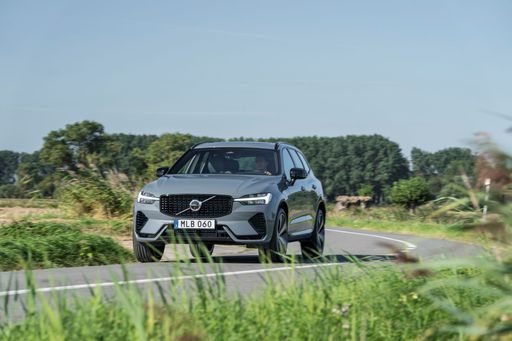 @ media.volvocars.com
@ media.volvocars.com
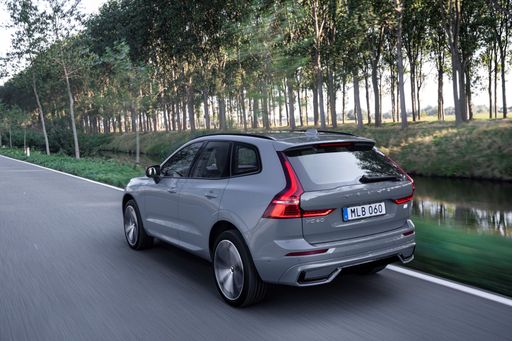 @ media.volvocars.com
@ media.volvocars.com
 @ media.volvocars.com
@ media.volvocars.com
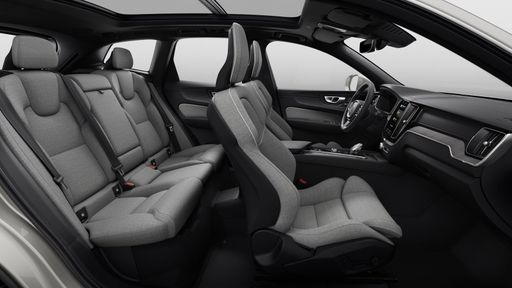 @ media.volvocars.com
@ media.volvocars.com
 @ media.volvocars.com
@ media.volvocars.com
BYD Seal U
The BYD Seal U presents itself as a sophisticated addition to the electric vehicle market, blending sleek design with cutting-edge technology. Its modern aesthetic is complemented by a spacious interior, offering both comfort and functionality for drivers and passengers alike. With advanced features prioritising sustainability and performance, it represents a bold step forward in eco-friendly motoring.
Details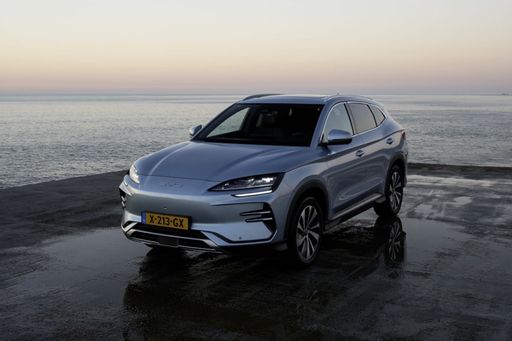 @ press.bydauto.be
@ press.bydauto.be
 @ press.bydauto.be
@ press.bydauto.be
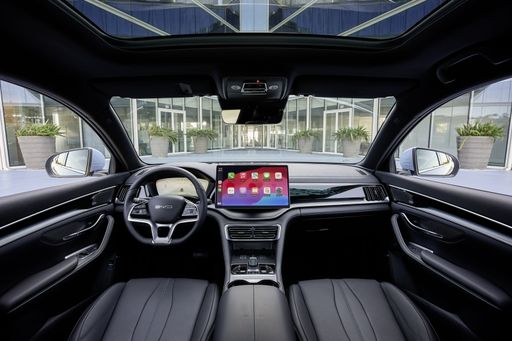 @ press.bydauto.be
@ press.bydauto.be
As the automotive industry evolves, two models are making an impactful impression in the SUV segment: the BYD Seal U and the Volvo XC60. Each presents its own unique set of features, technological advancements, and performance metrics that appeal to a wide range of consumers. This article compares these two vehicles, focusing on their specifications, innovations, and overall driving experience.
Design and Dimensions
In terms of design, both the BYD Seal U and Volvo XC60 embody modern aesthetics, blending functionality with style. The BYD Seal U boasts a length of 4775 mm, width of 1890 mm, and a height of 1670 mm, making it a formidable presence on the road. It has a spacious trunk capacity of 552 liters, offering ample storage for everyday needs.
On the flip side, the Volvo XC60 measures 4688 mm in length, 1902 mm in width, and 1658 mm in height. Although it's slightly smaller, the XC60's trunk capacity is still impressive, at 483 liters. The differences in dimensions might come down to personal preference regarding space and handling, but both vehicles are designed to provide comfort and functionality.
Powertrain Options
When it comes to powertrains, the BYD Seal U offers multiple engine options, including a plugin hybrid and electric alternatives. It can produce up to 324 HP, with a torque range of 300 to 550 Nm, depending on the configuration. The Seal U can achieve 0-100 km/h in as little as 5.9 seconds and has a top speed of 180 km/h. The electric range reaches up to 500 km, making it an attractive option for environmentally conscious consumers.
In contrast, the Volvo XC60 offers a selection of petrol MHEV and plugin hybrid engines, with power outputs ranging from 250 to an impressive 455 HP. The XC60 also emphasizes performance, achieving 0-100 km/h in as fast as 4.9 seconds. With a slightly lower electric range of 80 km, the XC60 makes a solid case for those seeking a blend of performance and efficiency.
Efficiency and Consumption
The BYD Seal U has set a benchmark in efficiency, with consumption figures as low as 0.9 L/100km and electric consumption reaching 19.9 kWh/100km. These figures showcase the model’s commitment to sustainability without compromising performance.
The Volvo XC60 shows competitive consumption metrics as well, particularly in its hybrid variants, where it achieves 0.9 L/100km in electric mode. However, its petrol variants consume 7.7 L/100km, which might deter some eco-conscious drivers. The XC60's CO2 emissions also vary, with values from 22 g/km for electric modes up to 174 g/km for petrol, showcasing a trade-off between power and emissions.
Innovative Technology
Both vehicles are packed with advanced technology, with BYD integrating features like an interactive infotainment system and various driver-assistance systems. The Seal U provides a seamless digital experience with its touchscreen controls and smartphone connectivity, ensuring a modern driving experience.
The Volvo XC60, on the other hand, includes its well-known Sensus infotainment system, which offers a user-friendly interface and connectivity options. Safety is a strong suit for Volvo, equipping the XC60 with advanced safety features, including automatic emergency braking, adaptive cruise control, and lane-keeping assist, ensuring peace of mind for drivers and passengers alike.
Final Thoughts: Which SUV Reigns Supreme?
Choosing between the BYD Seal U and the Volvo XC60 ultimately comes down to individual preferences and priorities. The BYD Seal U stands out for its eco-friendliness, impressive electric range, and efficient hybrids. Meanwhile, the Volvo XC60 shines in performance, safety features, and premium comfort. Both models bring exceptional value to the SUV market, ensuring drivers do not need to compromise on what they desire in their next vehicle.
As both brands continue to innovate and expand their offerings, the competition between traditional automakers and new electric vehicle entrants will be one to watch. Whether prioritizing sustainability or performance, the BYD Seal U and Volvo XC60 cater to the evolving preferences of modern drivers.

|

|
|
|
|
Kosten und Verbrauch |
|
|---|---|
|
Preis
56500 - 82000 Fr.
|
Preis
36400 - 43500 Fr.
|
|
Verbrauch L/100km
0.9 - 7.4 L
|
Verbrauch L/100km
0.9 - 1.2 L
|
|
Verbrauch kWh/100km
-
|
Verbrauch kWh/100km
19.9 - 20.5 kWh
|
|
Elektrische Reichweite
79 - 80 km
|
Elektrische Reichweite
70 - 500 km
|
|
Batteriekapazität
14.70 kWh
|
Batteriekapazität
-
|
|
co2
22 - 169 g/km
|
co2
0 - 26 g/km
|
|
Tankgröße
71 L
|
Tankgröße
60 L
|
Maße und Karosserie |
|
|---|---|
|
Karosserie
SUV
|
Karosserie
SUV
|
|
Sitze
5
|
Sitze
5
|
|
Türen
5
|
Türen
5
|
|
Leergewicht
1900 - 2150 kg
|
Leergewicht
1940 - 2147 kg
|
|
Kofferraum
468 - 483 L
|
Kofferraum
425 - 552 L
|
|
Länge
4688 mm
|
Länge
4775 - 4785 mm
|
|
Breite
1902 mm
|
Breite
1890 mm
|
|
Höhe
1658 mm
|
Höhe
1668 - 1670 mm
|
|
Zuladung
510 - 550 kg
|
Zuladung
410 kg
|
Motor und Leistung |
|
|---|---|
|
Motorart
Benzin MHEV, Plugin Hybrid
|
Motorart
Plugin Hybrid, Elektro
|
|
Getriebe
Automatik
|
Getriebe
Automatik
|
|
Getriebe Detail
Automatikgetriebe
|
Getriebe Detail
-
|
|
Antriebsart
Allrad
|
Antriebsart
Frontantrieb, Allrad
|
|
Leistung PS
250 - 455 PS
|
Leistung PS
218 - 324 PS
|
|
Beschleunigung 0-100km/h
4.9 - 6.9 s
|
Beschleunigung 0-100km/h
5.9 - 9.6 s
|
|
max. Geschwindigkeit
180 km/h
|
max. Geschwindigkeit
170 - 180 km/h
|
|
Drehmoment
350 - 709 Nm
|
Drehmoment
300 - 550 Nm
|
|
Anzahl Zylinder
4
|
Anzahl Zylinder
4
|
|
Leistung kW
184 - 335 kW
|
Leistung kW
160 - 238 kW
|
|
Hubraum
1969 cm3
|
Hubraum
1497 - 1498 cm3
|
Allgemein |
|
|---|---|
|
Modelljahr
2025
|
Modelljahr
2024
|
|
CO2-Effizienzklasse
F, B
|
CO2-Effizienzklasse
B, A
|
|
Marke
Volvo
|
Marke
BYD
|
Volvo XC60
Introduction to the Volvo XC60
The Volvo XC60 continues to set the standard in the luxury SUV category, embodying a blend of Scandinavian design, cutting-edge technology, and robust performance. As one of Volvo's best-selling models, the XC60 delivers an exceptional driving experience characterized by its impressive powertrains and a suite of innovative features. This article delves into the technical intricacies and innovative advancements that define the Volvo XC60, highlighting why it remains a top choice for discerning drivers.
Performance and Powertrains
The Volvo XC60 offers a range of powertrains to suit diverse preferences, from the efficient mild-hybrid systems to the powerful plug-in hybrids. The mild-hybrid variants provide a balance of performance and fuel economy, generating up to 250 PS and achieving fuel consumption as low as 7.7 L/100km. Meanwhile, the plug-in hybrid models take efficiency to another level, offering up to 455 PS with remarkably low fuel consumption of just 0.9 L/100km and an electric range of up to 80 km.
Electric Innovation
Volvo’s commitment to sustainability is evident in the XC60's plug-in hybrid models, which offer a battery capacity of 14.7 kWh. This allows for significant electric-only driving, reducing emissions and providing a quieter ride. With a focus on reducing its carbon footprint, Volvo offers some versions with CO2 emissions as low as 22 g/km. The renowned Polestar Engineered package further enhances the driving dynamics, featuring sport-tuned suspension and increased power output.
Advanced Safety Features
Known for prioritising safety, Volvo integrates several advanced safety technologies into the XC60. Standard features include the City Safety suite, which incorporates collision avoidance and mitigation, along with pedestrian detection. The SUV is also equipped with Volvo's Pilot Assist system, an advanced driver assistance feature that aids steering, braking, and acceleration up to 130 km/h, ensuring a more relaxed drive on highways.
Interior Comfort and Technology
The XC60 doesn’t compromise on luxury, offering a spacious interior with high-quality materials and state-of-the-art technology. The standard Sensus infotainment system provides intuitive control over multimedia, navigation, and connected services. Features such as a panoramic sunroof and premium audio systems enhance comfort and driving pleasure, while the adaptive seats and climate control ensure a comfortable environment for all passengers.
Conclusion
The Volvo XC60 exemplifies a harmonious blend of style, technology, and sustainability. With its array of powertrains and cutting-edge features, it meets the needs of a broad range of drivers, maintaining Volvo’s reputation for safety and quality. Whether one opts for the fuel-efficient mild-hybrid or the powerful plug-in hybrid, the XC60 remains a formidable contender in the luxury SUV market, offering a driving experience that is both indulgent and responsible.
BYD Seal U
An Introduction to the BYD Seal U
The BYD Seal U is a groundbreaking entrant in the automotive market, serving as a testament to the brand's commitment to innovative sustainable mobility solutions. Designed as an eco-friendly SUV, the Seal U is available in both Plug-In Hybrid and fully Electric variants, providing consumers with choices that align with their driving habits and environmental concerns.
Innovative Powertrains and Performance
At the heart of the BYD Seal U lies its forward-thinking powertrains. The Plug-In Hybrid model combines a finely tuned 1497 - 1498 cm³, 4-cylinder engine with an electric motor to deliver a total power output of up to 324 PS. The hybrid system is capable of achieving a frugal 0.9 - 1.2 litres per 100 km fuel consumption, though it does not compromise on performance with an impressive acceleration from 0 to 100 km/h in 5.9 - 9.6 seconds.
In the fully Electric variant, the Seal U boasts a substantial performance with up to 238 kW of power, ensuring a brisk ride while providing a clean and silent driving experience. With two battery options offering ranges from 420 km to an expansive 500 km, this electric SUV proves to be a formidable contender for those who prioritise long-distance electric mobility.
State-of-the-Art Design and Comfort
The Seal U's design embodies a sophisticated blend of style and function. Its commanding SUV silhouette, measuring between 4775 - 4785 mm in length, conveys both elegance and robustness. Inside, the vehicle offers room for five passengers, ensuring comfort with plush seating and a spacious interior that's accentuated by advanced ergonomic design and quality materials.
The boot space ranges from 425 to 552 litres, accommodating the demands of family trips or sizable grocery hauls with ease. In terms of technology, the Seal U does not disappoint, featuring an intuitive infotainment system that connects seamlessly with mobile devices, ensuring entertainment and connectivity on the go.
Advanced Safety Features
Safety is paramount for BYD, and the Seal U incorporates a suite of advanced safety technologies to protect its passengers. Systems such as adaptive cruise control, lane-keeping assist, and automatic emergency braking work in concert to enhance the driving experience while providing peace of mind. These features are complemented by a robust body structure designed to absorb and dissipate impact energy efficiently.
Environmentally Conscious Engineering
The BYD Seal U sets a new standard in eco-friendly automotive design. Its Plug-In Hybrid and Electric models both earn impressive CO2 efficiency ratings, ranging from class A to B, thanks to technologies that significantly reduce emissions. Additionally, its Plug-In Hybrid system enables an all-electric range up to 80 km, allowing for short day-to-day trips purely on electric power and making it an ideal choice for environmentally conscious drivers.
Pricing and Model Year
The BYD Seal U is accessible to a wide range of budgets with prices beginning at €38,900 and extending to €44,990, depending on specifications and chosen trim levels such as Boost CVT, Comfort, Design, and Design AWD CVT. As we look to the future, the 2024 model year is poised to continue BYD's tradition of excellence, bringing advanced engineering and sustainable practices to drivers eager for innovation and efficiency.
Die angezeigten Preise und Daten sind Schätzungen, die auf deutschen Listenpreisen basieren, und können je nach Land variieren. Diese Informationen sind rechtlich nicht bindend.
